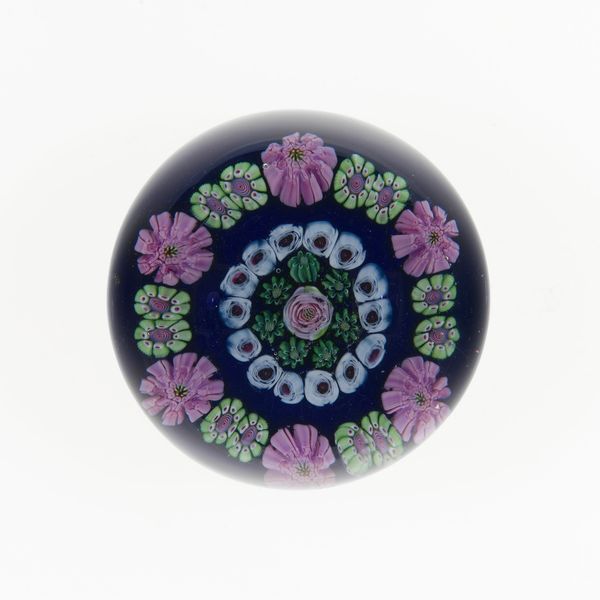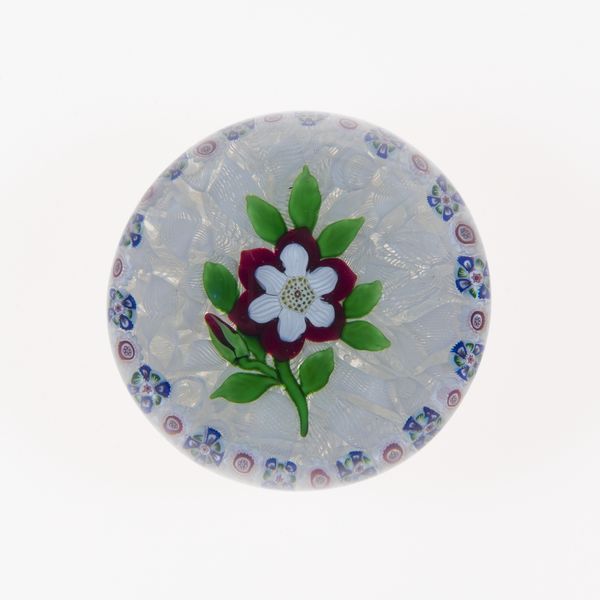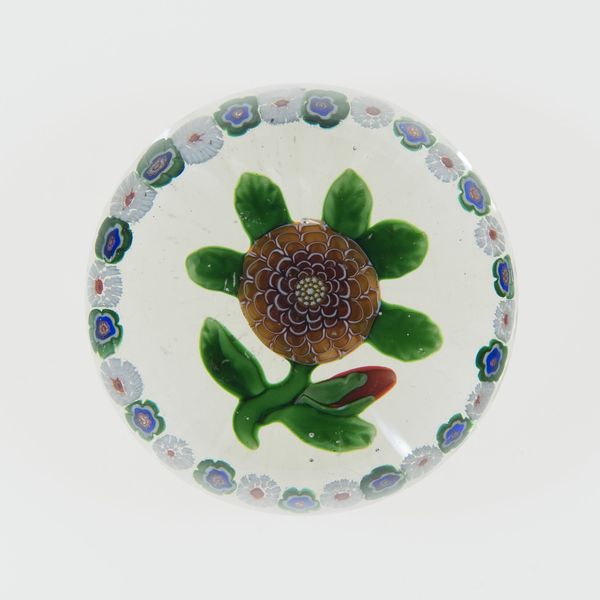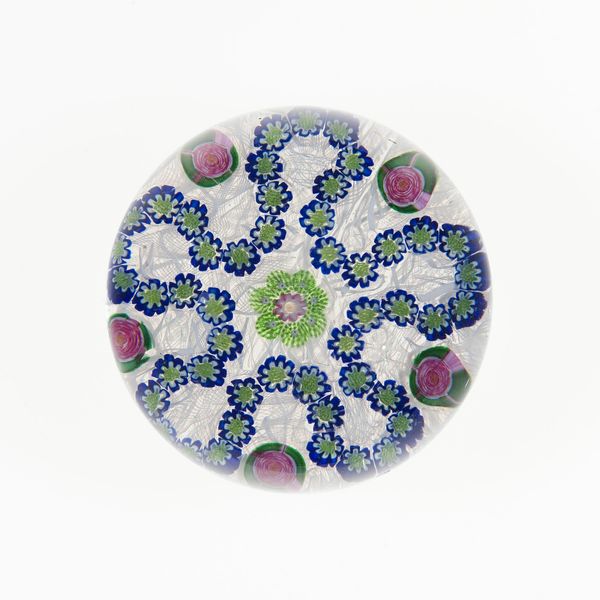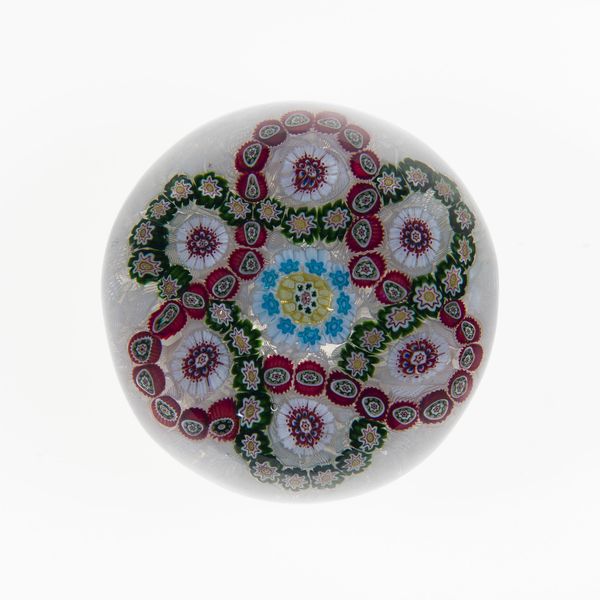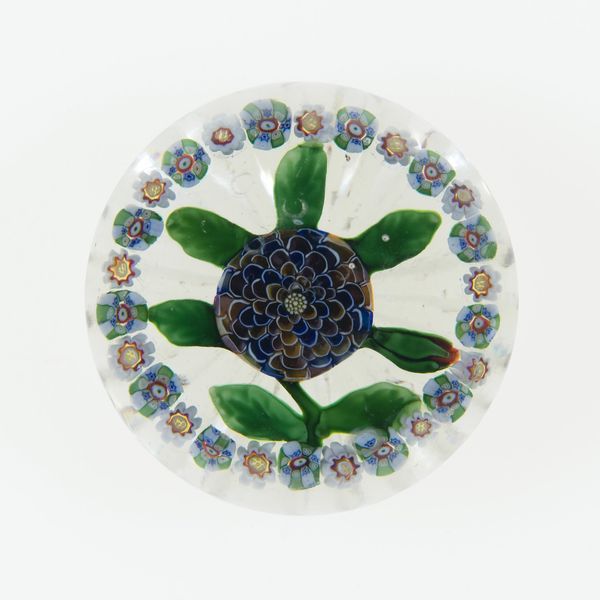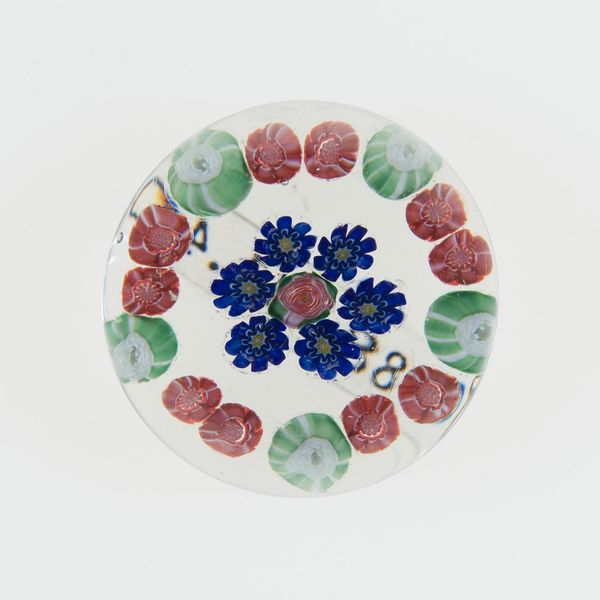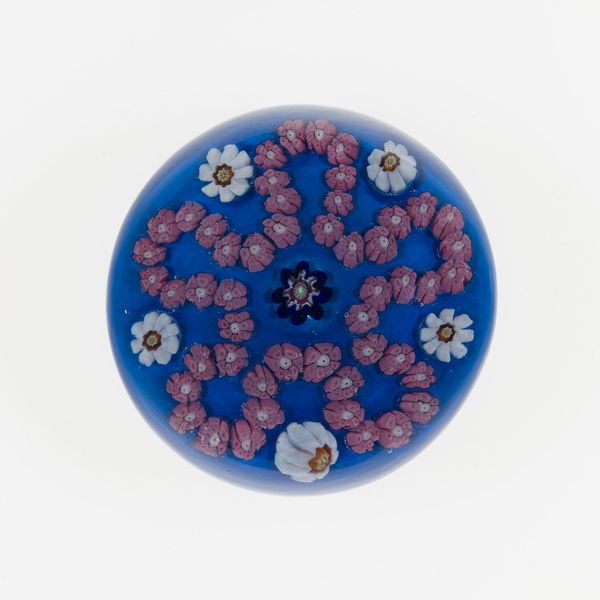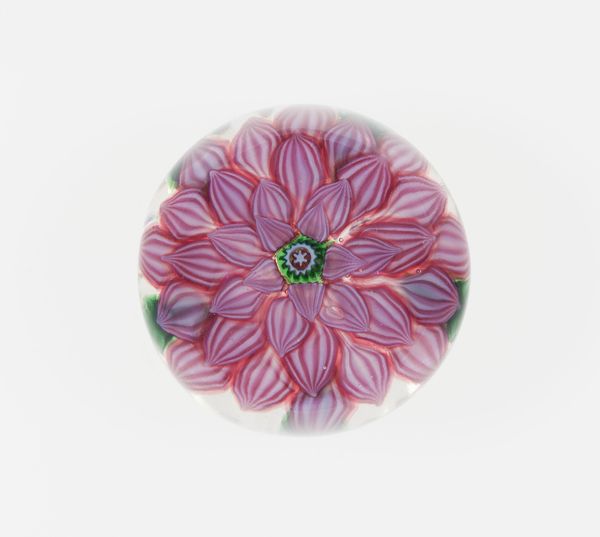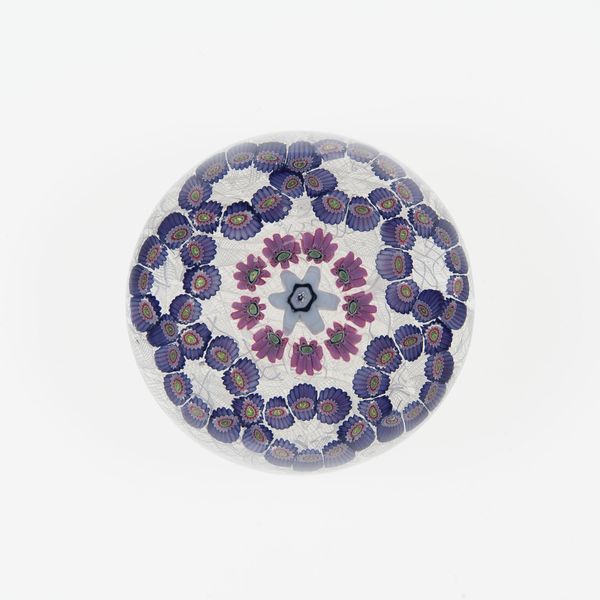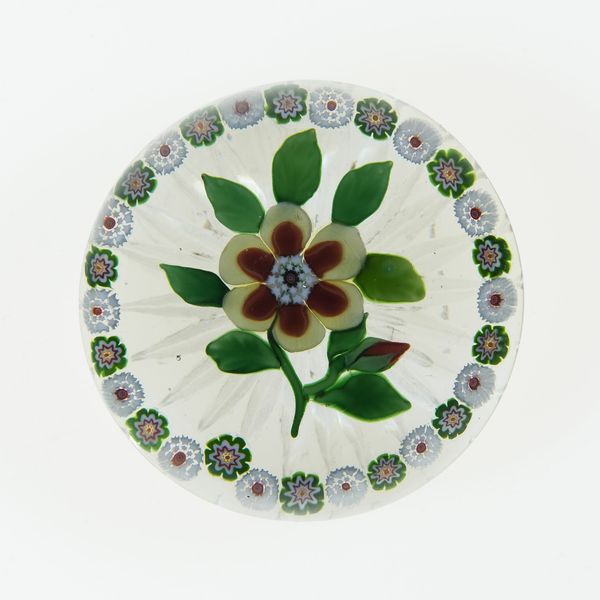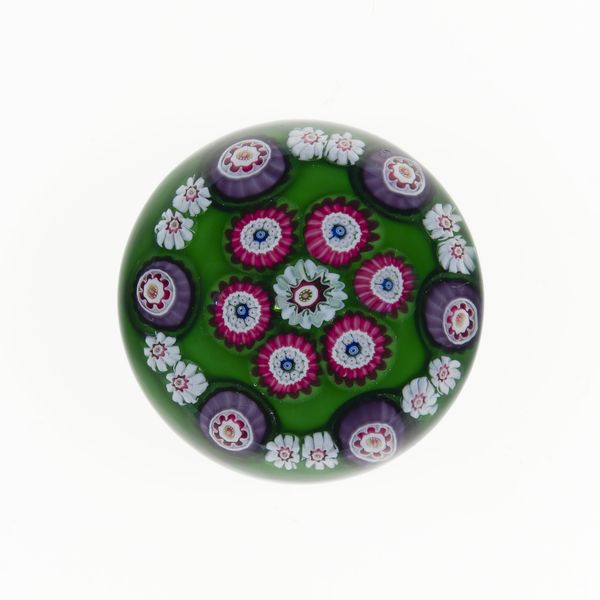
glass
#
glass
#
decorative-art
Dimensions: 1 3/4 in.
Copyright: Public Domain
Editor: This is a nineteenth-century glass paperweight, made by the Clichy Glasshouse. It’s such a delicate and intricate object. The flowers encased in glass are mesmerizing! What’s the story behind these? Curator: These paperweights represent more than just decorative art; they are indicative of a shift in societal values and industrial capabilities in 19th-century Europe. The rise of the middle class, with more disposable income and a taste for luxury goods, created a market for these intricate objects. Factories like Clichy, drawing upon advances in glassmaking technology, fulfilled this demand, transforming what was once exclusively high art for the aristocracy, making beauty available more broadly. What do you think the decision to encase something natural in glass might signify? Editor: I suppose it speaks to a desire to preserve something beautiful, to hold onto it, or even display a certain degree of mastery over nature itself. Do you think that reads too far into it? Curator: Not at all. This act of preservation reflects broader cultural trends. Think of the Victorian interest in collecting specimens and cataloging the natural world. It also highlights the power dynamic between humans and nature during the industrial revolution. What do you think about the object’s function as a ‘paperweight’? Editor: It feels like such a mundane function for something so exquisitely crafted! The artistry feels a little at odds with the object’s utility. Curator: Exactly! It points to an interesting tension of democratized beauty and labor during this time period; mass-produced, but intricate! The weight literally and figuratively holds down ideas, or ‘paper’. Editor: I hadn’t considered the double meaning before, about literally weighting down ideas. This piece makes me think about the art object in totally new ways! Curator: Right? It prompts one to think about the broader cultural and economic forces that shape both the production and reception of art, something you wouldn’t immediately assume at face value.
Comments
No comments
Be the first to comment and join the conversation on the ultimate creative platform.
